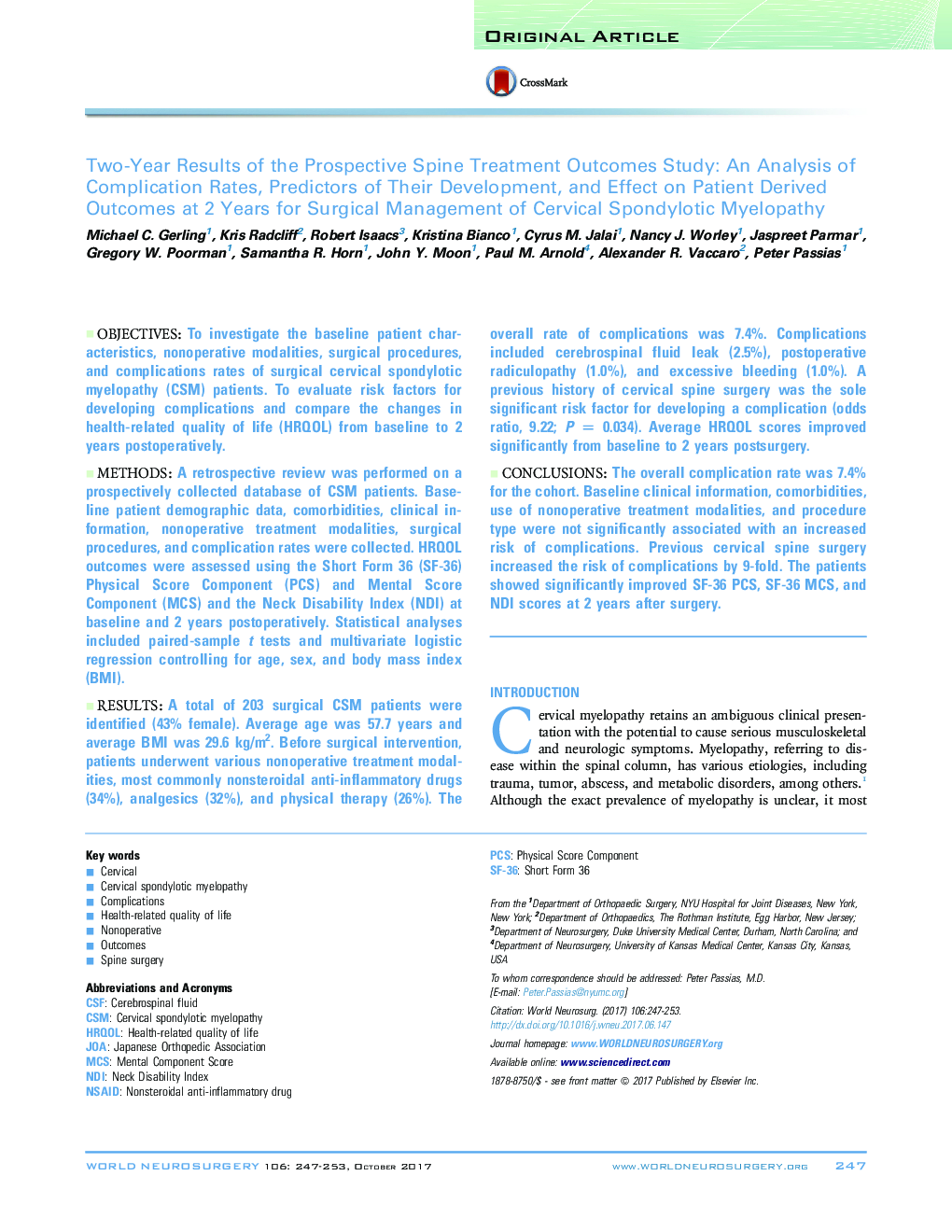| کد مقاله | کد نشریه | سال انتشار | مقاله انگلیسی | نسخه تمام متن |
|---|---|---|---|---|
| 5633987 | 1581449 | 2017 | 7 صفحه PDF | دانلود رایگان |
ObjectivesTo investigate the baseline patient characteristics, nonoperative modalities, surgical procedures, and complications rates of surgical cervical spondylotic myelopathy (CSM) patients. To evaluate risk factors for developing complications and compare the changes in health-related quality of life (HRQOL) from baseline to 2 years postoperatively.MethodsA retrospective review was performed on a prospectively collected database of CSM patients. Baseline patient demographic data, comorbidities, clinical information, nonoperative treatment modalities, surgical procedures, and complication rates were collected. HRQOL outcomes were assessed using the Short Form 36 (SF-36) Physical Score Component (PCS) and Mental Score Component (MCS) and the Neck Disability Index (NDI) at baseline and 2 years postoperatively. Statistical analyses included paired-sample t tests and multivariate logistic regression controlling for age, sex, and body mass index (BMI).ResultsA total of 203 surgical CSM patients were identified (43% female). Average age was 57.7 years and average BMI was 29.6 kg/m2. Before surgical intervention, patients underwent various nonoperative treatment modalities, most commonly nonsteroidal anti-inflammatory drugs (34%), analgesics (32%), and physical therapy (26%). The overall rate of complications was 7.4%. Complications included cerebrospinal fluid leak (2.5%), postoperative radiculopathy (1.0%), and excessive bleeding (1.0%). A previous history of cervical spine surgery was the sole significant risk factor for developing a complication (odds ratio, 9.22; PÂ = 0.034). Average HRQOL scores improved significantly from baseline to 2 years postsurgery.ConclusionsThe overall complication rate was 7.4% for the cohort. Baseline clinical information, comorbidities, use of nonoperative treatment modalities, and procedure type were not significantly associated with an increased risk of complications. Previous cervical spine surgery increased the risk of complications by 9-fold. The patients showed significantly improved SF-36 PCS, SF-36 MCS, and NDI scores at 2 years after surgery.
Journal: World Neurosurgery - Volume 106, October 2017, Pages 247-253
